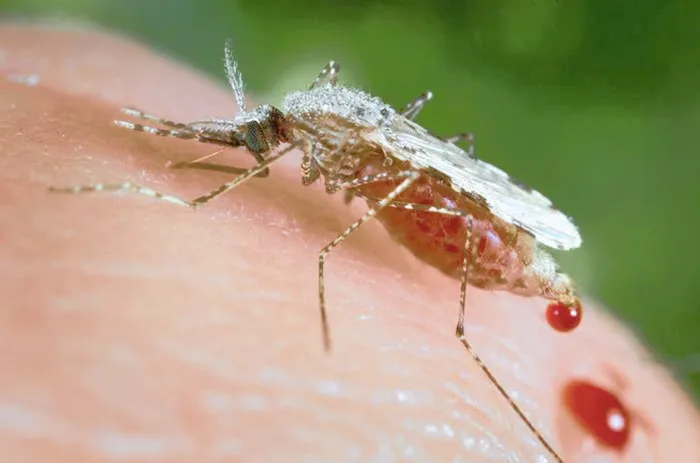Malaria-carrying mosquito species spreading like wildfire in Africa

According to the World Health Organization (WHO), this species of mosquito, first identified in parts of South Asia and the Arabian Peninsula a decade ago, has been migrating rapidly into Africa, especially in Nigeria, Ethiopia, Sudan, Somalia, and Djibouti. Picture: AP
Cape Town - Just as South Africa is on the verge of joining the cohort of countries in the world that has eliminated malaria, identified by reporting zero indigenous malaria cases in a year, a new invasive vector, Anopheles stephensi, is spreading like wildfire with Africa the hardest hit.
According to the World Health Organization (WHO), this species of mosquito, first identified in parts of South Asia and the Arabian Peninsula a decade ago, has been migrating rapidly into Africa, especially in Nigeria, Ethiopia, Sudan, Somalia, and Djibouti.
Unlike the other mosquito vectors of malaria in Africa, Anopheles stephensi thrives in urban settings. With more than 40% of the African population living in urban environments, its spread poses a significant threat to the control and elimination of malaria.
The fact that large-scale surveillance of the vector is still in its infancy, and more research and data are urgently needed, simply heightens this threat.
WHO last week launched a new initiative aimed at stopping the further spread of this invasive mosquito species in the region and to other parts of Africa. Lest there be complacency, the cost of inaction could be disastrous.
One WHO modelling study projected that An. stephensi could put an additional 126 million people in Africa at risk of malaria if the mosquito vector were to spread unchecked.
Africa’s association with malaria is both calamitous and tragic. According to WHO data, the vast majority of malaria cases (95%) and deaths (96%) in the world in 2020 (the year of latest available statistics) were found in the WHO African Region, with children bearing the brunt of the disease.
The good news is that many African countries with moderate to high malaria transmission saw a significant reduction in their malaria burden between 2000 and 2015.
However, the rate of progress has levelled off in recent years, and disruptions to malaria services during the Covid-19 pandemic have further jeopardised malaria control efforts in the region.
Take South Africa for instance. It has migrated from a high burden status to the E-2020 cohort of 21 countries in which the number of indigenous cases of malaria reported is zero and thus eliminated by 2020. In the period 2010-2020, says the WHO, the number of malaria cases in the 21 E-2020 countries decreased by 84%.
But South Africa has had a setback in extricating itself from the E-2020 cohort and to move to the higher one of countries free from malaria.
In fact, according to WHO data reported by the Department of Health, the number of indigenous malaria cases increased from 3 096 in 2019 to 4 463 in 2020. This was the case in other E-2020 countries, including Botswana, Ecuador, Suriname, Saudi Arabia and Butan, albeit South Africa had the highest year-on-year increase of 1 367 additional cases.
Figures for 2021 are not yet available. Despite the ambition of eliminating malaria altogether from South Africa, porous borders with neighbouring countries, especially Mozambique, which is a high burden malaria country, and other structural reasons, about 6 million South Africans could be at risk of contracting malaria. In 2020, the Department of Health reported 98 562 suspected cases of malaria to the WHO, of which 8 126 were presumed or confirmed.
The new WHO initiative to stop the spread of Anopheles stephensi is aimed at increasing collaboration; strengthening surveillance especially in the tracking of the vector; improving information exchange; developing guidance; and prioritising research.
For the sake of Africa’s innocent children, politicians, the medical fraternity and frontline workers, the scientific research cohort, NGOs and civic organisations all need to buy into the urgency of the response to eliminate malaria.
It is perverse that in 2020 there were an estimated 241 million cases of malaria worldwide, which resulted in an estimated 627 000 preventable deaths. Sadly, some 96% of them were in Africa!
*Parker is an economist and writer based in London
Cape Times
Related Topics: